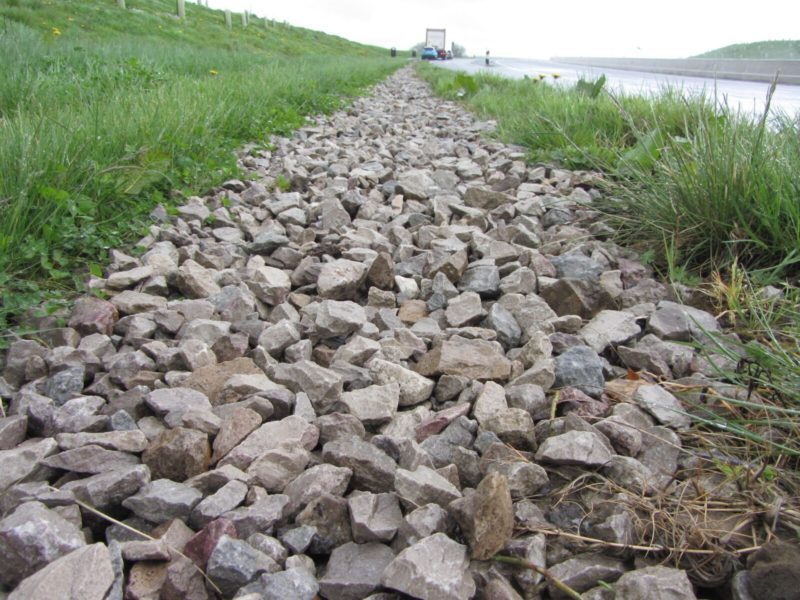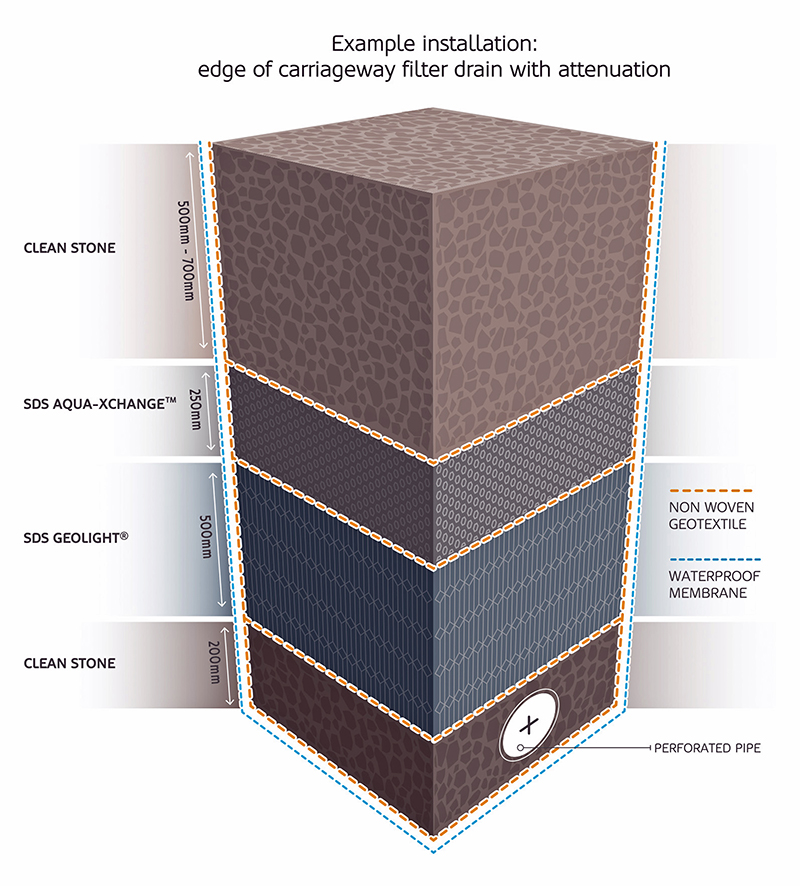
TOXIC metals carried in surface water runoff from roads and other heavy-traffic locations threaten the health of Scotland’s rivers and streams through persistent and bioaccumulative pollution, according to SuDS manufacturer SDS Limited.
The firm has produced a new drainage material, described as promising a “flexible, cost-effective and highly-efficient” way to capture heavy metals so they cannot be discharged into the water environment.
SDS Aqua-Xchange is an engineered treatment medium made from naturally-occurring materials. SDS said it has been proven in independent testing to achieve “almost total removal” of dissolved copper and zinc from surface water runoff. It is now available for consulting engineers and infrastructure contractors to deploy as stormwater treatment in highways and railway drainage, as well as on other higher risk sites such as retail car parks, freight and logistics hubs.
SDS worked with scientists at the University of Chester to perfect a combination of materials selected to target harmful pollutants. SDS market development manager Jo Bradley explained, “The results of the testing were outstanding. Aqua-Xchange uses the processes of adsorption and ionic exchange to form unbreakable bonds with the heavy metals, including copper and zinc, capturing and retaining them so they can’t be flushed away in heavy storms.
“Aqua-Xchange offers an affordable alternative solution to protecting the water environment, and can be used in both existing and new drainage schemes. By filtering out finer silts and sediments, it can also be effectively used alongside drainage devices such as vortex separators that target larger particles.

“Copper and zinc removal is increasingly sought by SEPA and Transport for Scotland, and could be a requirement of planning approval on high-risk developments.
“That’s because runoff pollution, as a result of tyre erosion, dust from brake and clutch pads, engine wear and exhaust emissions, carries persistent, toxic and bioaccumulative pollutants into rivers, streams and groundwater. The pollutants attach to silts and sediments and some are dissolved in the water. Copper and zinc are directly toxic, so can affect aquatic species as soon as they enter the watercourse.”
In a typical application, SDS said the product can be introduced as a layered component in a roadside or trackside linear filter drain. Geocellular storage can be added beneath it to provide additional attenuation.
Aqua-Xchange can be deployed as part of a stormwater treatment train alongside other SuDS devices; for example a hydrodynamic vortex separator such as SDS Aqua-Swirl can be installed upstream to remove silt and sediments.
By providing a large active surface area, SDS said Aqua-Xchange enables high-performance treatment in a small space, thus providing an opportunity for designers to deliver pre-treatment and then to include smaller SuDS ponds or wetlands where otherwise there would have been no room for them.
Aqua-Xchange is delivered to site in one cubic metre bags and can be introduced at shallow depth. SDS added that with an estimated minimum performance lifespan of 25 years on medium-risk sites, it requires “minimal maintenance”.








